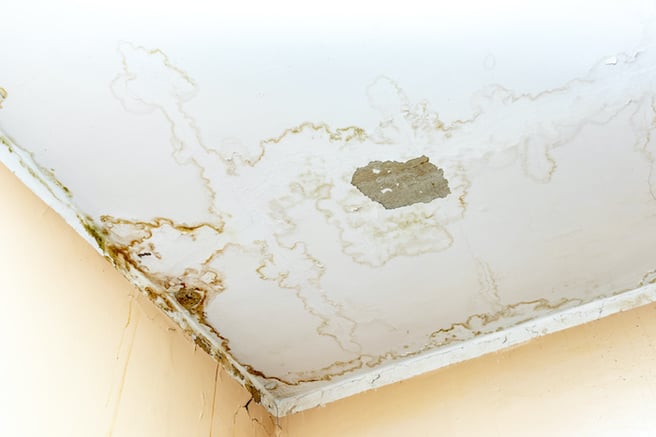Everyone may have their own individual rationale about How to Repair and Prevent Bathroom Water Damage?.

Water damage usually occurs in the washroom because of the water made use of day-to-day. Occasionally, the damage could be a little mold from the shower. Other times, it's huge damage on your flooring. Whatever it is, it is always good to recognize the reason and avoid it prior to it takes place.
This guide will undergo some of the usual causes of water damage in the washroom. We will certainly also examine what you can do to prevent these reasons from damaging your restroom. Allow's dive in.
5 Common Root Causes Of Water Damage in Washrooms
These are the typical factors you would certainly have water damage in your restrooms and also just how you can find them:
Burst or Dripping Pipelines
There are several pipelines bring water to various parts of your bathroom. Some pipelines take water to the commode, the sink, the taps, the shower, and many other locations. They crisscross the tiny location of the restroom.
Every so often, these pipelines could obtain rusty and also ruptured. Various other times, human action could trigger them to leakage. When this takes place, you'll find water in the edges of your washroom or on the wall surface.
To detect this, keep an eye out for gurgling walls, molds, or mold. Call an expert emergency plumbing technician to fix this when it happens.
Splits in your wall surface tilesv
Restroom wall floor tiles have been specifically developed for that purpose. They secure the wall surface from moisture from people taking showers. However, they are not indestructible.
Sometimes, your washroom wall surface floor tiles fracture as well as permit some dampness to seep right into the wall surface. This can possibly damage the wall surface if you do not take any kind of action. If you observe a crack on your wall surface ceramic tiles, fix it quickly. Don't wait until it destroys your wall.
Overruning bathrooms and sinks
As humans, sometimes we make mistakes that might create some water damage in the bathroom. For example, leaving your sink tap on might create overruning and damages to other parts of the shower room with wetness.
Additionally, a malfunctioning toilet could trigger overflowing. For instance, a broken commode handle or other parts of the cistern. When this takes place, it could harm the flooring.
As soon as you observe an overflowing sink or bathroom, call a plumber to assist manage it right away.
Roofing Leakages
In some cases, the trouble of water damage to the bathroom may not originate from the washroom. For instance, a roof covering leak might create damage to the restroom ceiling. You can detect the damage done by taking a look at the water spots on the ceiling.
If you locate water stains on your ceiling, inspect the roofing to see if it's harmed. After that, call a specialist to help resolve the problem.
Excess Dampness
It's awesome to have that long shower as well as dash water while you hem and haw and also imitate you're executing, but in some cases these acts might trigger water damage to your washroom.
Spraying water around can create water to head to edges as well as create mold and mildews. See how you spread excess moisture around, and when you do it, clean it up to prevent damage.
Conclusion
Water damage to your restroom can be irritating. However, you can handle it if you avoid a few of the causes discussed in this guide. Call a professional emergency plumbing if you notice any extreme damages.
Common Causes of Water Damage in a Bathroom
Water damage can appear virtually anywhere in your home, but bathrooms and basements are the two most common areas. It’s easier to spot causes and signs of water damage in an unfinished basement, but that doesn’t mean it’s any less severe to have water damage occur in your bathroom.
Spotting Signs of Bathroom Water Damage
The bathroom is probably the most common place where you’ll use water in your home. Because of this, there’s a relatively high risk of sustaining water damage. The longer water damage goes untreated, the worse it can get. Therefore, you need to know what signs to look for and deal with any damage as soon as possible.
There are often items like rugs, bottles, towels, and so on crammed in every corner of the typical bathroom, which can trap moisture and hide budding problems. But what usually causes the most water damage in a bathroom? How can you spot it, especially with so many items in the way? This article addresses several common ways to notice, prevent, or fix bathroom water damage.
A Recurring or Persistent Musty Odor
Wherever there’s water damage, you almost always find small spots of mold, or even a full-blown infestation. When you leave mold to thrive and grow, it creates a stinking, musty odor that’s pretty hard to miss. Don’t leave musty smells unaddressed—try to find the source so that you can have it repaired before more damage occurs.
Damaged Grout or Caulk
When these sealing agents fail, virtually nothing prevents water from seeping past the barrier, causing water damage and mold growth underneath wall and flooring tiles. Damaged showerheads, spigots, grout, or caulking, combined with excessive moisture, create the perfect environment for mold to thrive.
Loose Tiles or Spongy Floors
Moldy and water-damaged walls make it more difficult for tiles to stay in place, which can cause them to become loose. In addition, persistent moisture on a bathroom floor can result in water damage to the subflooring layer, causing it to degrade, lose integrity, and feel spongy.
Stubborn Growth
If there’s visible mold in your bathroom that you’ve removed more than once, the most likely reason it keeps coming back is a deeper infestation in the walls or floors. It’s critical to deal with this problem immediately to prevent further damage and new or worsening health issues.
https://advantaclean.com/blog/common-causes-of-water-damage-in-a-bathroom/

Common Causes of Water Damage in a Bathroom
Water damage can appear virtually anywhere in your home, but bathrooms and basements are the two most common areas. It’s easier to spot causes and signs of water damage in an unfinished basement, but that doesn’t mean it’s any less severe to have water damage occur in your bathroom.
Spotting Signs of Bathroom Water Damage
The bathroom is probably the most common place where you’ll use water in your home. Because of this, there’s a relatively high risk of sustaining water damage. The longer water damage goes untreated, the worse it can get. Therefore, you need to know what signs to look for and deal with any damage as soon as possible.
There are often items like rugs, bottles, towels, and so on crammed in every corner of the typical bathroom, which can trap moisture and hide budding problems. But what usually causes the most water damage in a bathroom? How can you spot it, especially with so many items in the way? This article addresses several common ways to notice, prevent, or fix bathroom water damage.
A Recurring or Persistent Musty Odor
Wherever there’s water damage, you almost always find small spots of mold, or even a full-blown infestation. When you leave mold to thrive and grow, it creates a stinking, musty odor that’s pretty hard to miss. Don’t leave musty smells unaddressed—try to find the source so that you can have it repaired before more damage occurs.
Damaged Grout or Caulk
When these sealing agents fail, virtually nothing prevents water from seeping past the barrier, causing water damage and mold growth underneath wall and flooring tiles. Damaged showerheads, spigots, grout, or caulking, combined with excessive moisture, create the perfect environment for mold to thrive.
Loose Tiles or Spongy Floors
Moldy and water-damaged walls make it more difficult for tiles to stay in place, which can cause them to become loose. In addition, persistent moisture on a bathroom floor can result in water damage to the subflooring layer, causing it to degrade, lose integrity, and feel spongy.
Stubborn Growth
If there’s visible mold in your bathroom that you’ve removed more than once, the most likely reason it keeps coming back is a deeper infestation in the walls or floors. It’s critical to deal with this problem immediately to prevent further damage and new or worsening health issues.
https://advantaclean.com/blog/common-causes-of-water-damage-in-a-bathroom/
We had been brought to that editorial about How to Repair and Prevent Bathroom Water Damage? through an associate on another site. Feel free to take a moment to share this page if you appreciated it. Thanks so much for taking the time to read it.
Tap dripping? Phone!